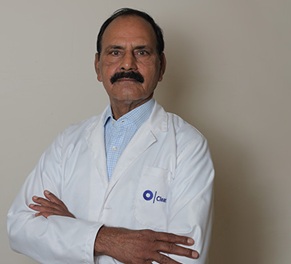Difference between Piles, Fissure and Fistula

Quick Summary
- Piles, fissure, and fistula are all conditions that affect the rectum and anus.
- Piles are swollen veins in the anus or rectum.
- Fissures are small tears in the lining of the anus.
- Fistulas are abnormal passages that connect two organs or body parts.
Are you afraid of going to the toilet because of pain every time you have a bowel movement? It could be because of piles, fissure, or fistula, all of which affect the rectum and the anus. However, there is a lack of understanding of the difference between piles, fissure and fistula.
The rise in a static lifestyle leads to poor gut health, and the consequences often include piles, fistula, and fissure. Regardless of the age gap, many people are facing these conditions. Let’s dive into the topic of piles vs fissure vs fistula to understand how they differ from each other.
What is Piles?
The anal tract contains many significant veins. The blood flow to the anus can get interrupted due to chronic constipation, straining while passing stools, pregnancy or obesity, which can cause the swelling of the veins. These swellings are called piles or haemorrhoids. Piles may be of two types:
- Internal Haemorrhoids- They form in the lower rectum and occasionally protrude from the anus.
- External Haemorrhoids- They appear on the skin surrounding the anus. In case a blood clot forms in an external pile, a hard lump develops around the anus.
There is increased pressure in the lower rectum, causing piles that can be brought on by:
- Straining excessively during bowel movements
- Sitting on the toilet for long
- Persistent Diarrhoea or Constipation.
- Obesity
- Pregnancy
- Anal intercourse
- Eating a low-fibre diet
- Repetitive heavy lifting


What is a Fissure?
Linear tear in the anal mucosa is called an anal fissure. Chronic anal fissure persist for more than four to eight weeks. Bowel movements become difficult when one has chronic constipation. While passing hard stool, the mucous layer around the anus could be torn or ripped. Anal fissure are more common in children than in adults. Reduced blood flow to the anal canal muscles or Crohn’s disease (a disease that causes swelling and irritation of the digestive tract) can also cause fissure in adults. The following factors may contribute to the trauma:
- Constipation that persists over time
- Struggling to go to the bathroom, mainly if the stool is hard or dry
- Persistent diarrhoea
- Anal stretching
- Anal sex
- Insertion of foreign objects into the anus
What is a Fistula?
Faecal matter can block the tiny glands in the anus and cause infection. It results in an abscess formation (pus collection). If the pus from the abscess does not drain properly, a fistula (an abnormal connection between two parts of the body) can form. Anal abscesses and clogged anal glands are the leading causes of an Anal Fistula. Other, considerably less frequent diseases that might result in an anal fistula are:
- Trauma
- Crohn's disease (an inflammatory illness of the gut)
- Infections caused by sexual contact
- Cancer
- Diverticulitis causes tiny pouches to grow in the big intestine and become inflamed
- Tuberculosis
Piles vs Fissure vs Fistula
The three medical conditions known as fissure, piles, and fistula appear identical at first glance. But if they are looked at closely, the difference between piles, fissure, and fistula is significant. The following are the primary distinctions between piles, fistula, and fissure:
- Blood vessels in the anal canal are affected by piles.
- The fistula is the tunnel between the anus and the surrounding skin that is infected.
- A fissure is a painful crack on the anal tissue's lining.
You can differentiate between piles, fissure, and fistula with the help of the information given below:
- Most piles are painless and unnoticeable. Fissure is much more painful. The fistula leaks pus out of the anal region and is quite painful.
- In addition to constipation, commonly associated with all three, piles are linked to pregnancy. Fissure is associated with straining while passing stools and diarrhoea. Fistula is commonly caused by Crohn’s disease, obesity, and prolonged sitting.
- By eating a high-fibre diet and drinking more fluids can prevent all three. Furthermore, by practising better toilet hygiene practices, one can prevent fistula.
- Over-the-counter medications and home remedies can be used to treat piles. A Lateral Sphincterotomy Surgery and medication may be necessary to treat fissure. It is much more difficult to detect and treat fistula; it may be necessary to perform a Magnetic Resonance Imaging (MRI) scan or sonofistulagram to determine their passage. Video-assisted Anal Fistula treatment and other approaches like Laser Surgery are used to treat them.
Symptoms of Piles, Fissure and Fistula
Piles are swollen blood vessels in the rectum, a fistula is when the anal region and the skin form an irregular canal, and fissure are cut in the anal lining. Therefore, the common symptoms of piles, fissure and fistula are:
| Piles | Fissure |
Fistula |
|
The anus is sore with redness |
A clear visible tear around the anus | Anorectal pain with swelling in the anus |
|
Pain while passing stools |
Severe pain before and after excretion | Pain while passing stools |
|
Presence of mucous discharge |
Blood-stained and hard stools | Discharge of pus |
|
Bleeding (Often Painless) |
Cracked skin around the anal area |
Skin irritation and redness |
|
Feeling constipated |
Small lump or skin tag | Foul-smelling fluid in the anal area |
|
Itchiness around anus |
Discharge with bad odour | Tiredness and fever |
|
Tenderness in the anal region |
Itching and Irritation around the anal area | Bleeding from the rectum |
It is always advisable to see a doctor if you experience bleeding, pain, or drainage from the anus. These are issues that are typically simple to identify and address. To treat these disorders, several procedures are available, including surgery.
Causes of Piles vs Fissure vs Fistula
Piles, fissure and fistula are anorectal disorders. Various factors can cause piles, fissure and fistula. A few factors that help to understand the difference between causes of piles, fissure and fistula are:
| Piles | Fissure | Fistula |
|
Suffering from longterm constipation |
Hard stools | Infection in the anal gland |
|
Obesity |
Surgical procedures | Rectal cancer |
|
Consuming a low-fibre diet |
Multiple pregnancies | Crohn’s disease |
|
Dehydration |
Overuse of laxatives | Infection of the urinary tract |
|
Ageing or genetic makeup |
Sexually transmitted diseases | Presence of ulcers in the rectum and large intestine |
|
Pregnancy |
Inflammatory bowel diseases | Tuberculosis |
It is crucial to know the cause and consult your nearest doctor for immediate treatment if any symptoms are caused by anal disorders.
Quick Facts on Piles, Fissure and Fistula
Some interesting facts about Piles, Fissure and Fistula are:
- 75 per cent of the population is affected with piles by age 50.
- Piles is most common during pregnancy.
- The anus can occasionally clog due to blood resulting in external haemorrhoids.
- With the help of medication and a diet high in fibre, an acute fissure is easily treatable.
- Chronic fissure can recur and is challenging to manage.
- Fistula might be linked to obesity and spending a lot of time sitting still.
- The fistula can appear as an oozing pus-filled large, painful, and red opening.
- Antibiotics can be used to treat a fistula.
Conclusion
The anal canal is affected by piles, fissure and fistula. It is important to remember that these issues are not related to the same illness. These illnesses each have different locations and degrees of intensity where they have an impact on the human body. Every symptom must be carefully examined, and then treatment should be sought if necessary. Consult a doctor as soon as possible if you have piles, fissure, or fistula.
At HexaHealth, we provide the best care and zero-cost surgery assistance. We take care of Hospital admissions, insurance claims, and other paperwork at zero cost. We do corrective Minimally Invasive Surgeries for various conditions, including Laser and Stapler Surgeries for Piles, Fissure, and Fistula. Our team of 1500+ doctors is there to guide you every step of the way!
Frequently Asked Questions
What is the difference between piles, fissure and fistula?
Blood vessels in the anal canal are affected by piles. The fistula is the tunnel between the anus and the surrounding skin that is infected. A fissure is a painful crack on the anal tissue's lining.
Can fissure turn into piles?
Due to certain similarities in symptoms between the two, anal fissure is sometimes misinterpreted as haemorrhoids by the patient or the primary care physician. This delay in diagnosis runs the risk of turning an acute fissure into a chronic one, which makes treatment more challenging.
Is fistula a type of piles?
Blood vessels swell up in piles, whereas a fistula is characterised by the growth of a tunnel from the anus to the surrounding skin.
Which is worse fissure or piles?
A fissure is essentially little cracks, while piles are primarily enlarged blood vessels. Most of the time, piles are painless and invisible. A fissure is quite painful.
Which is more painful; fistula or a fissure?
A fissures is more painful. When there is a fistula, pus leaks from the anal region.
Can a fissure be mistaken for a fistula?
An anal fissure is a tear in the skin of the anal wall. It could be confused for a fistula-in-ano since it involves a skin opening. A fissure, however, does not have an outside opening or extend into a tract.
What is piles disease?
The swollen veins in the anal or rectal region due to chronic constipation is called piles. It causes discomfort and bleeding.
What is a fissure?
A small tear in the anal region is called a fissure. It can cause due to the passing of hard stools that can also lead to bleeding.
What is fistula disease?
The fistula is the tunnel between the anus and the surrounding skin that is infected. It can cause due to injury or infection.
How does a fissure turn into a fistula?
A healed fissure can turn into a fistula.
Last Updated on: 3 September 2024
Reviewer

Dr. Aman Priya Khanna
MBBS, DNB General Surgery, Fellowship in Minimal Access Surgery, FIAGES
14 Years Experience
Dr Aman Priya Khanna is a well-known General Surgeon, Proctologist and Bariatric Surgeon currently associated with HealthFort Clinic, Health First Multispecialty Clinic in Delhi. He has 14 years of experience in General Surgery, Proctolo...View More
Author
HexaHealth Care Team
HexaHealth Care Team brings you medical content covering many important conditions, procedures falling under different medical specialities. The content published is thoroughly reviewed by our panel of qualified doctors for its accuracy and relevance.
Expert Doctors (10)
NABH Accredited Hospitals (5)
Latest Health Articles
Related Treatments



























 Open In App
Open In App